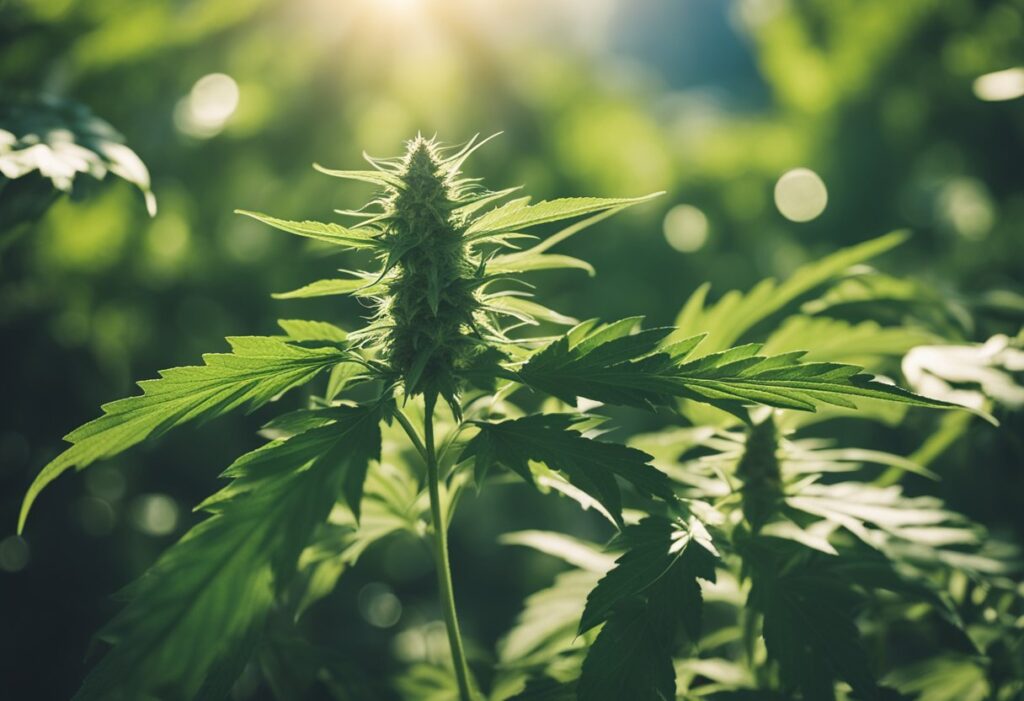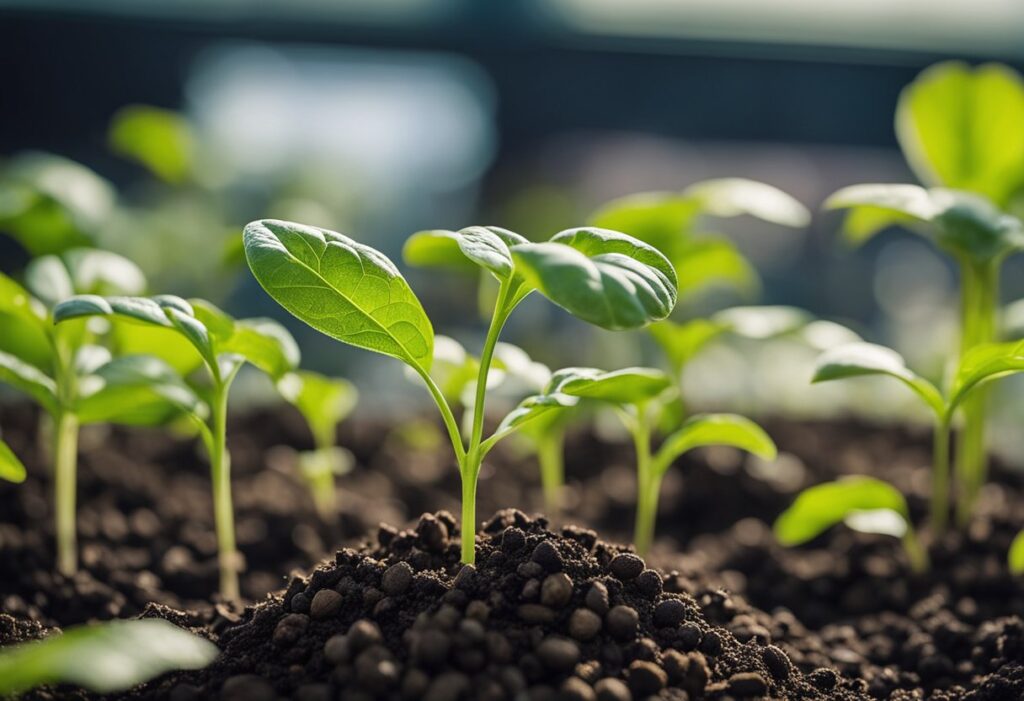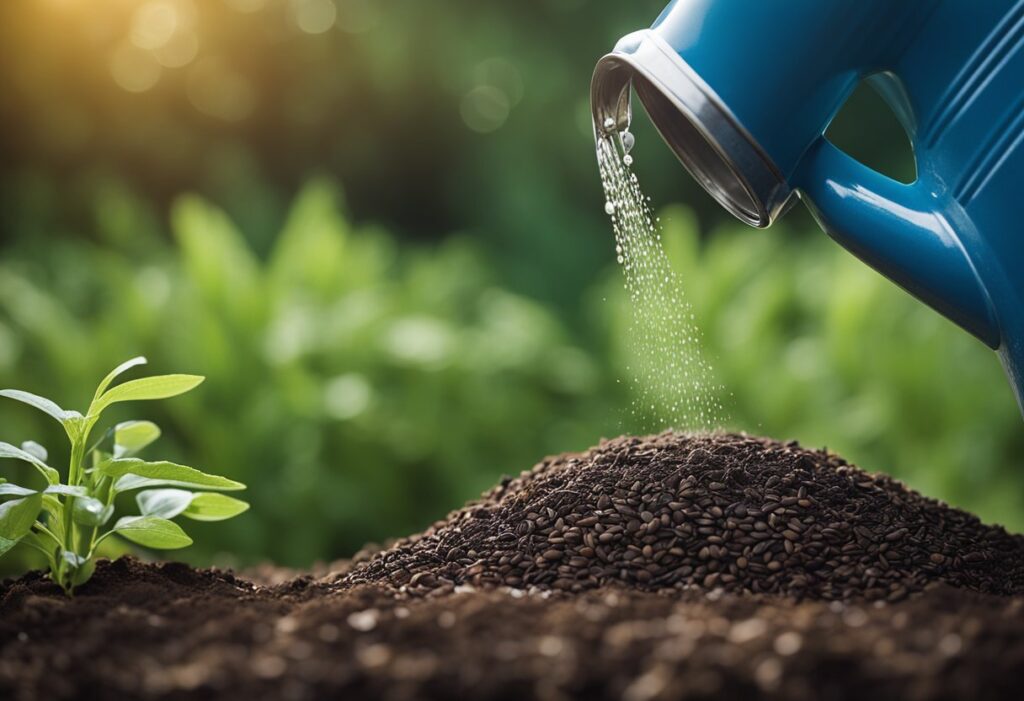
In this section, you’ll learn about the specific genetics of Blue Dream, the ideal climate for its growth, and the crucial role humidity plays in its cultivation process.
Blue Dream is a cannabis strain that combines the genetics of Blueberry indica with the sativa Haze. It is known for its high yield and relatively simple cultivation process, which makes it a favorite among growers. The strain exhibits a balance of indica and sativa effects, offering a relaxing body high with gentle cerebral invigoration, ideal for daytime use.
Indoor Cultivation:
Outdoor Cultivation:
Early Growth Stage:
Flowering Stage:
Remember, precise control of temperature and humidity is key to a successful Blue Dream grow. Whether you’re cultivating indoors or outdoors, monitoring these conditions and making adjustments as needed will promote healthy growth and bountiful yields.

Getting the soil and nutrient mix right is fundamental for cultivating Blue Dream seeds. Your Blue Dream’s growth potential hinges on balancing the soil’s texture, nutrient profile, and pH level to ensure your plants have access to what they need when they need it.
Your soil choice is the bedrock of your Blue Dream’s future. Opt for a well-draining soil mix that’s rich in organic matter. This ensures that roots get enough oxygen and water without the risk of rot. You should aim for a soil that holds moisture but drains excess water efficiently. A loamy soil with perlite or vermiculite can provide the appropriate environment for your Blue Dream seeds to thrive.
To prosper, your Blue Dream plants will need an adequate supply of key nutrients at different stages of their growth:
Together, these macronutrients should form the core of your fertilizing regime, but don’t overlook micronutrients such as iron, which plays a crucial role in chlorophyll production.
For nutrient uptake to be efficient, your soil’s pH level should be slightly acidic, between 6.0 and 7.0. This range ensures that nutrients are soluble and available to the plant roots. Regularly test the pH level and adjust accordingly using pH up or down solutions to maintain this delicate balance; this way, your Blue Dream can absorb all the goodness you provide.

To cultivate Blue Dream seeds successfully, it’s crucial to implement precise watering techniques and schedules that are tailored to the growth stages of the cannabis plant.
Consistency is key when watering your Blue Dream seeds. Establishing a schedule ensures that your cannabis plants receive the right amount of moisture they need to flourish.
For Blue Dream, a schedule might look something like this:
| Growth Stage | Watering Frequency |
|---|---|
| Seedling | Sparingly |
| Early Vegetative | Every 2-3 days |
| Late Vegetative | Every 1-2 days |
| Flowering | As necessary |
Adjust the schedule according to the specific needs of your plants, as they might need more or less water depending on their environment and size.
Multiple factors will influence how often you should water your Blue Dream plants. Understanding these factors can help you make informed adjustments to your watering schedule.
Always check the top inch of soil before watering; if it’s dry, it’s time to water your plant. Conversely, if the soil feels damp, you can hold off on watering for another day.

Effective lighting and plant training methods are key to maximizing the yield of your Blue Dream seeds. Proper light selection and strategic training techniques can significantly enhance plant growth and increase final production.
When growing Blue Dream plants indoors, it’s vital to provide the right type of lighting during each growth phase. During germination and seedling stages, keep your lights on for 16-24 hours a day and maintain a gentle intensity to prevent stress on the young plants. As they mature into the vegetative stage, maintain this light cycle but you can gradually increase the light intensity.
Transition to a 12-12 light cycle—12 hours of light and 12 hours of darkness—once you want your plants to start the flowering stage. It’s crucial to mimic natural sunlight as much as possible for optimal growth. Hence, using a full-spectrum LED light is a fantastic choice, especially one that’s around 200W. They’re energy-efficient and less harsh than other types of grow lights.
Employing plant training techniques allows you to manipulate the shape and size of your Blue Dream plants, promoting better light exposure and air circulation.
Remember, these techniques should be carried out with care to avoid stressing your plants. Your Blue Dream’s ability to thrive hinges on the balance between correct lighting and training methods. Utilizing these approaches in harmony with each other will ensure you are on the right path to obtaining a bountiful harvest.
Navigating the watering schedule for your Blue Dream plants is crucial to their success. These FAQs will help you fine-tune your watering routine to ensure your plants thrive.
During the vegetative stage, water your Blue Dream plants when the top inch of soil feels dry. This can be anywhere from once every few days to once a week, depending on factors like soil type, container size, and climate.
Increase watering frequency as your Blue Dream plants enter the flowering stage. This is when they have increased water needs due to rapid growth and development of buds.
Wilting leaves suggest your Blue Dream plants need more water, while yellowing or drooping leaves can mean you’re overwatering. Adjust your watering schedule accordingly to maintain optimal soil moisture.
In hotter climates, your Blue Dream plants may need watering more often to prevent the soil from drying out too quickly. In cooler, more humid climates, less frequent watering is necessary. Always check soil moisture before watering.
Blue Dream autoflowering plants have a shorter life cycle and may require less water compared to regular strains. They also don’t follow the traditional vegetative and flowering stages, making regular moisture checks essential.


WE ARE EVERY GROWERS ONE STOP SHOP TO ACQUIRE PREMIUM CANNABIS SEEDS FOR SALE IN THE USA, CANADA AND AUSTRALIA
Farmers Lab Seeds 2024,
All Right Reserved
Seeds are sold as novelty items, souvenirs, and collectibles. They contain 0% THC. We encourage our customers to check the legislation in their Country, State, Province, and Municipality prior to purchasing items from our store. We do not provide growing information.
All seeds are sold as hemp, and lab tested under 0.3% THC. This product is not for use by or sale to persons under the age of 21. This product should be used only as directed on the label. It should not be used if you are pregnant or nursing. Consult with a physician before use if you have a serious medical condition or use prescription medications. A Doctor’s advice should be sought before using this and any supplemental dietary product. All trademarks and copyrights are property of their respective owners and are not affiliated with nor do they endorse this product.
These statements have not been evaluated by the FDA. This product is not intended to diagnose, treat, cure or prevent any disease. Individual weight loss results will vary. By using this site, you agree to follow the Privacy Policy and all Terms & Conditions printed on this site. Void Where Prohibited by Law.